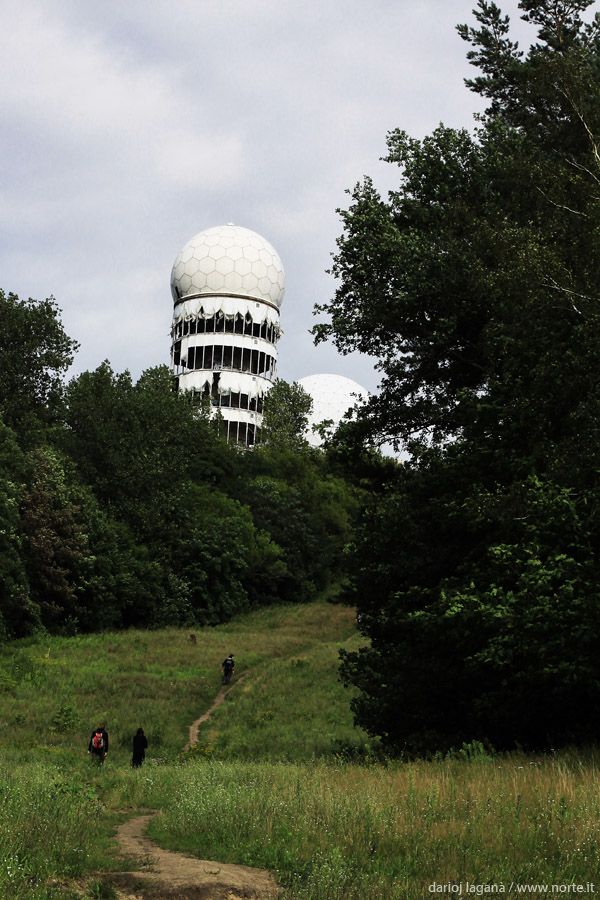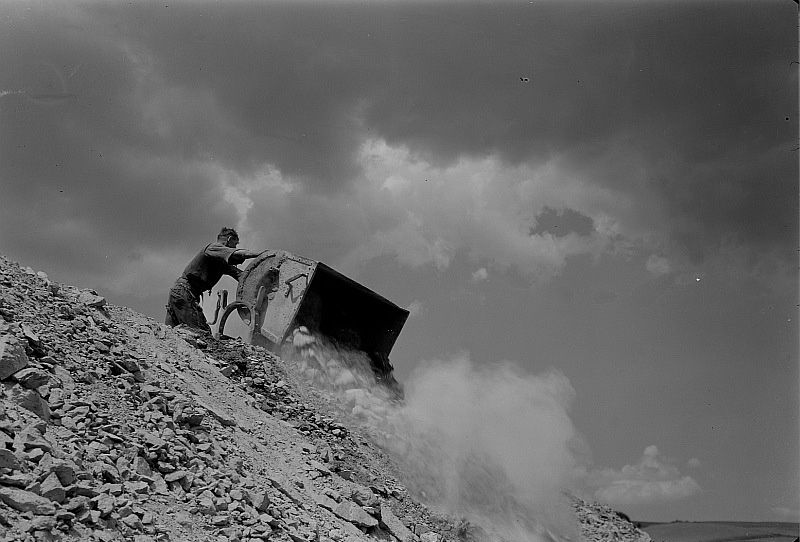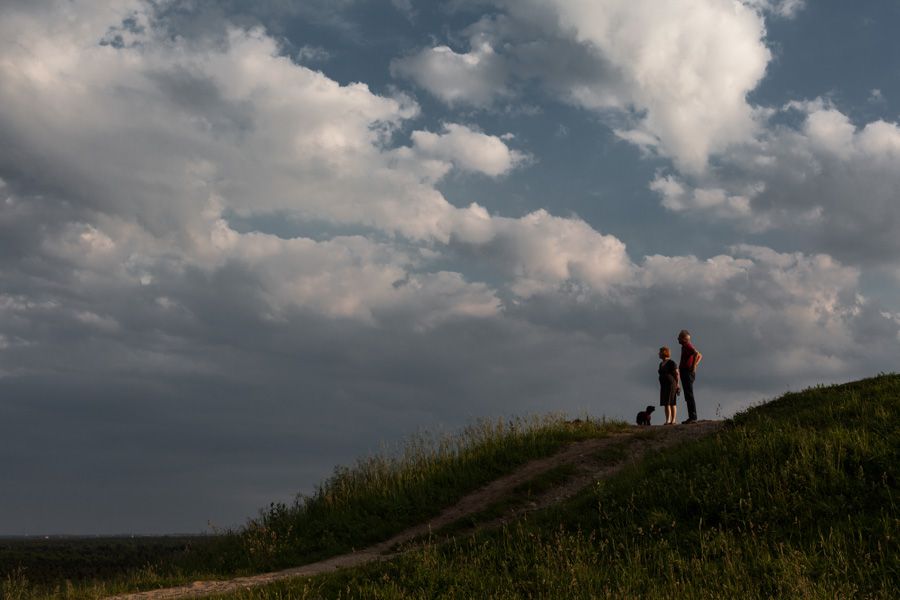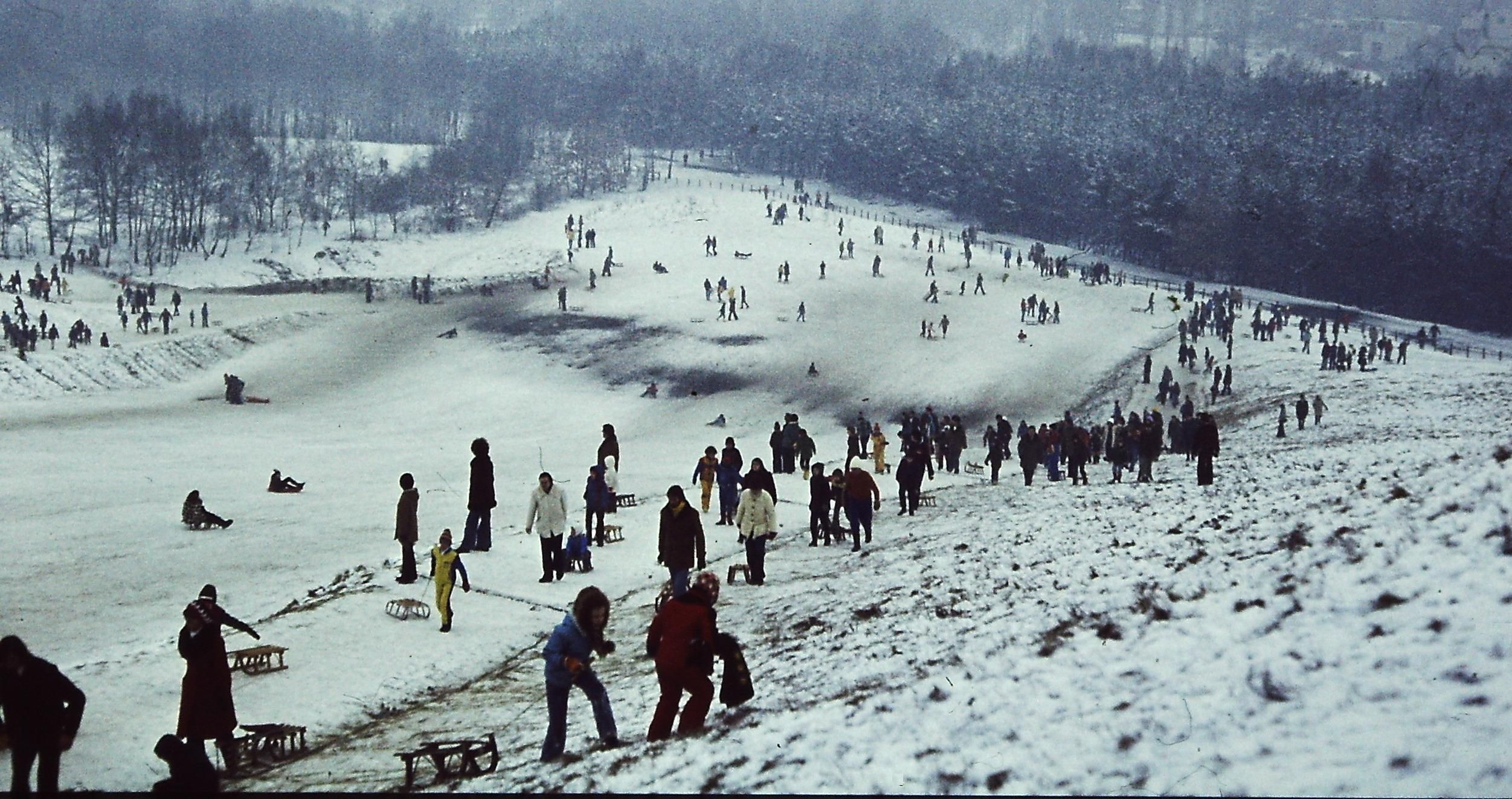Hitler! War! Destruction!
February 14, 2016 The Idea List Berlin Adolf Hitler History
In Berlin, a devilish chapter of history is buried under history itself.
 Teufelsberg by Dario-Jacopo Lagana’ is licensed under CC BY-NC-ND 2.0
Teufelsberg by Dario-Jacopo Lagana’ is licensed under CC BY-NC-ND 2.0
On clear days, you can see it from the city: A run-down radar station, perched on a hill overlooking Berlin. The station has a somewhat sinister look, no doubt because of the many holes dotting its once pristine surface. And if that wasn’t enough, it stands on what is called the Devil’s Mountain.
Teufelsberg — its German name — is located in the western outskirts of the Berlin. It is far away from where most tourists go, and an oddity even in this city full of oddities. Sure, there’s that abandoned radar station, a remnant of the Cold War and a paradise for urban explorers. But the hill is not just a testament to history, it is of history itself: Teufelsberg is man-made, constructed from the rubble of bombed-out Berlin.
Following the Second World War, as the city was rebuilding, it dumped more than 75 million cubic meters of debris here. In the 1970s, the rubble was covered and trees were planted, resulting in a gently sloping hill. But below the hill’s grass and wildflowers still lie the ruins of a city that no longer exists.
An entire city, pulverized and compacted.
It’s a fascinating, if depressing thought that an entire city can be reduced to mountains of rocks, splinters and dust. That there is an earlier iteration of today’s Berlin, which has been pulverized, moved aside, and compacted.
And that the city itself was used to conceal its shameful past: Below Teufelsberg, under the grass, the soil, and the countless tons of rubble stand the ruins of a military college built by the Nazis during their reign.
 A symbolic scene from Dresden. The Berlin city archive has a lot of great pictures from the making of the actual Teufelsberg, but unfortunately hasn’t released them for editorial use.
A symbolic scene from Dresden. The Berlin city archive has a lot of great pictures from the making of the actual Teufelsberg, but unfortunately hasn’t released them for editorial use.
You would be forgiven for thinking that the name has to do with the events of the 20th century. That it was distilled from that stunning list of atrocities (Hitler! War! Destruction! More war! Decay!) and ascribed to Lucifer himself. Perhaps for a lack of better justification. But when the rubbled started growing into the city’s second highest elevation, people simply named it after a nearby lake. The Devil’s lake.
Who says we need the devil?
And this is where the story takes its final turn for the absurd. This hill, born of destruction, and a spot for Cold War espionage, was placed not just over the past but right next to a spot where the devil is said to have appeared.
Legend has it that the area was once inhabited by a Slavic tribe, which was infiltrated by the devil, who posed as an idol. The local bishop, the story continues, had the tribe massacred and the devil exorcized. He disappeared into an abyss in the ground that quickly filled with dark water and gave the lake its name.

History is muddy here, rife with rumors and speculation about what exactly happened back then.
It’s safe to say that the devil managed to capture public imagination, both back then and now. Just as he was cited for the lake, the devil’s association with the hill makes intrinsic sense. It remains a strange place and stands out atmospherically. Berlin doesn’t have many elevations, making the artificial Teufelsberg the second largest hill in the city and affording an unusual view over the city.
The abandoned radar station’s towers poke out from behind the trees, and in summer there is an endless amount of mosquitos swarming up from the lake. You may not believe in the devil, but if humans can create this place, who says we even need him?
 Rodeln am Teufelsberg by Dr. Karl-Heinz Hochhaus
Rodeln am Teufelsberg by Dr. Karl-Heinz Hochhaus
This piece was originally published as part of The Idea List, a magazine I ran between 2015-16.